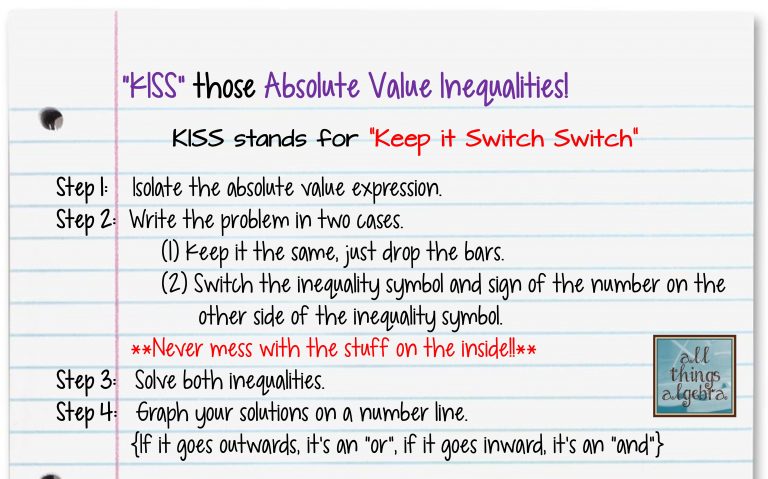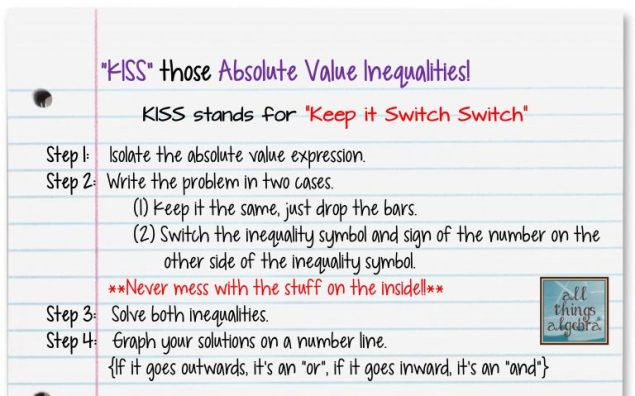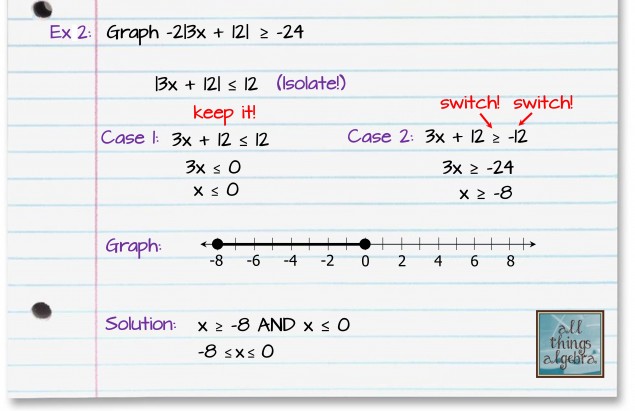Absolute Inequalities “KISS” Method

There are certain topics that some students REALLY struggle with, and for me, that was absolute value inequalities. I tried teaching my students the standard method of setting up greater than or greater than or equal to as “or” problems and less than or less than or equal problems as “and” problems, and that didn’t work. That seemed like too much to remember, especially when the symbol flipped during the isolation process. They really needed the same approach to all problems. So I came up with this “KISS” method. This stands for “Keep it Switch Switch”, which many students remember from other math concepts. Over the years, I have gotten many emails and questions on TpT about what this method is from those that use my notes. Hopefully this blog post will help explain it, give you another tool in your teacher toolkit, and perhaps help one more student solve these problems 🙂
First, I always start my lesson with a couple basic examples. I will ask my students “What kind of numbers would have an absolute value greater than or equal to 4?” I’ll get students say 4, 5, 6, … etc. Then, the light bulb turns on shortly thereafter, and they move to the other side of the number line with -4, -5, -6,… etc. SO we graph this and they see it’s an “OR” compound inequality. Then, I will ask the same question, but reverse it to “What kind of numbers would have an absolute value less than or equal to 4?” They both verbally and show me on the number line that it would have to be numbers between -4 and 4. We graph this and they see that it’s an “AND” inequality.
When we start solving more complex problems, I give them these set of directions:

Here is an example that would result in an “or” problem:

And here is an example that would result in an “and” problem:

Doing it this way allows students to analyze what their graph looks like at the END of the problem, rather than trying to discern at the beginning from the symbols.
I hope this helps!!!
~Gina~
All Things Algebra
